Comics in the Silver Age were shaken AND stirred…
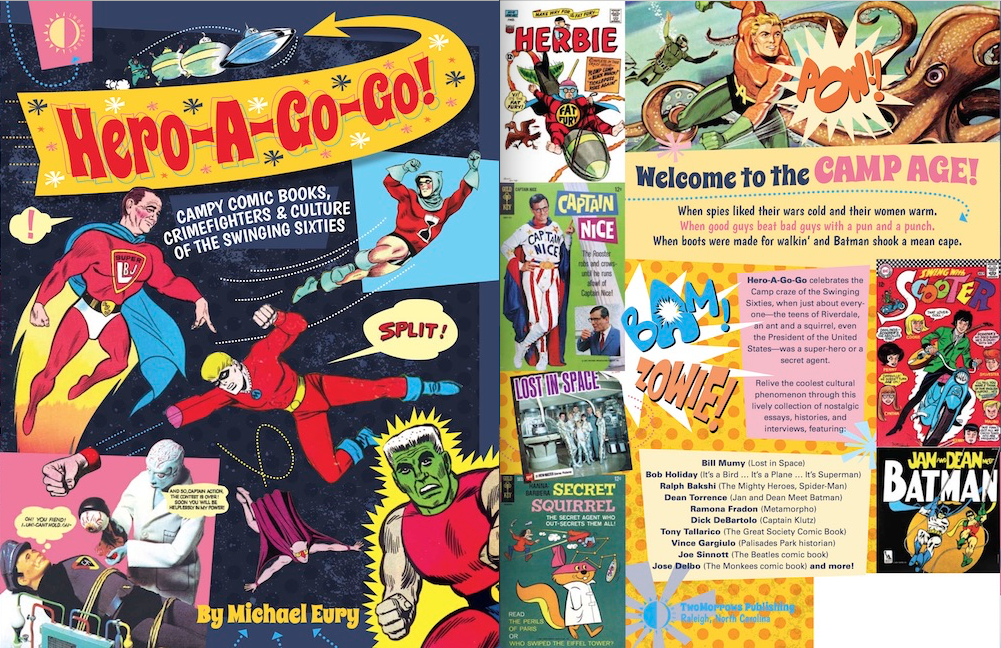
—
Every Saturday for 13 weeks, we’re serializing Back Issue editor Michael Eury’s upcoming book Hero-A-Go-Go! — a ginchy exploration of the Silver Age and Swingin’ Sixties. For other installments, click here.
Hero-A-Go-Go! is out now. You can order it here.
—
If you’re gonna do a book about ’60s comics and pop culture, then you’re gonna have to include James Bond — even if 007 made barely a blip on the four-color page.
Naturally, then, Michael Eury dedicated a hefty portion of Hero-A-Go-Go! to the world’s greatest superspy and his impact. We gave you a taste already with our excerpt on The Man From UNCLE — click here — but there’s so much more.
Now, you’d think Bond would have been a natural for the full-blown comic-book treatment in the States, but DC blew a golden opportunity with the rights. You can read more about that in Rob Kelly’s recent REEL RETRO CINEMA column, here.
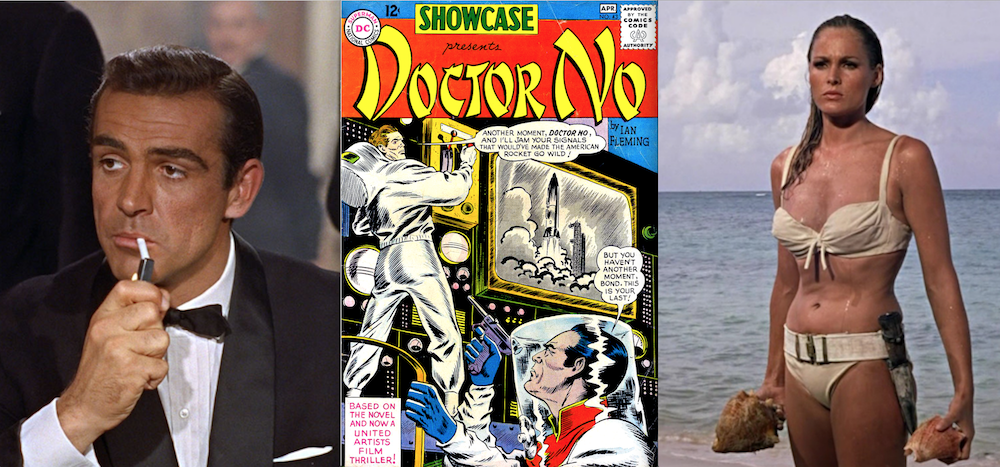
Nevertheless, even if DC only managed to produce a single issue of Showcase featuring 007, Bond’s influence was felt throughout the industry.
In the penultimate entry of our 13-week serialization of the book, Michael gets into some of the more offbeat ways Bond left his mark on comics. And again, there’s much more in the book itself, so make sure you check it out:
—
By MICHAEL EURY
While Bond didn’t become a Sixties comic-book regular, Dr. No and the Bond franchise imprinted comics in three significant ways:
First, the movies’ Dr. No—portrayed by Canadian-born actor Joseph Wiseman, who was turned into a Chinese master criminal via cheesy eye makeup—unfortunately re-popularized “Yellow Peril” villains, a stereotype that reacted to the fear of the spread of Eastern Asian communism by demonizing “Orientals” with fangs, or Fu Manchu mustaches, or pointed ears and claws (or long nails), or all of the above. Yellow Peril villains often were bald and spoke with thick accents, and in comic books and cartoons were colored a jaundiced yellow.
While the Civil Rights Movement and evolving cultural mores in cinema and on television were loosening the stranglehold that Caucasians had long held on popular culture, slowly but surely representing a multicultural population, Dr. No encouraged the creation of such characters as Jonny Quest’s foe Dr. Zin, Wonder Woman’s enemy Egg Fu, and lesser-known adversaries like Undersea Agent’s Dr. Fang, villains deemed racially offensive by today’s standards. Even good guys evoked this stereotype, like Dick Tracy’s TV cartoon sidekick Joe Jitsu and the classic film detective Charlie Chan, whose spy-craze revival in comic books occurred long past the character’s expiration date.
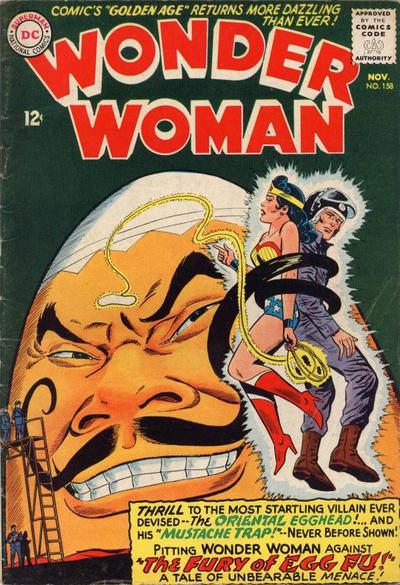
Second, whatever evil medical school issued doctorates to super-villains had record attendance during the Camp Age. That university might have been located in Hollywood, which cranked out Dr. Strangelove and Dr. Goldfoot and the Bikini Machine on the heels of Dr. No (they also pitted Our Man Flint against Dr. Wu, Dr. Krupov, and Dr. Schneider).
Cartoon characters took on Dr. Gizmo, Dr. Goo Fee, and Dr. Yes. Ideal Toys’ Captain Action was given an adversary, Dr. Evil, when Austin Powers ’ Mike Myers was still in a playpen. But comic books embraced the evil doctor during the post-Dr. No Sixties like no other medium, introducing forgettable, cookie-cutter crime-kooks like Dial “H” for Hero’s Dr. Cyclops (not to be confused with the 1940 sci-fi villain of the same name) and Dr. Rigor Mortis, Blue Beetle’s Dr. Clugg, Son of Vulcan’s Dr. Kong, and Captain Atom’s Dr. Spectro.
At least Marvel’s Dr. Doom and Dr. Octopus and DC’s Dr. Light and Dr. Polaris—serious threats, all—raised the bar for the dastardly doctors of the Swinging Sixties. And lastly, the Bond craze popularized the acronym, with the period replacing the exclamation point as the most-used comic-book punctuation mark (although the periods were often eliminated in acronyms when writers and comics letterers realized what a pain they were).
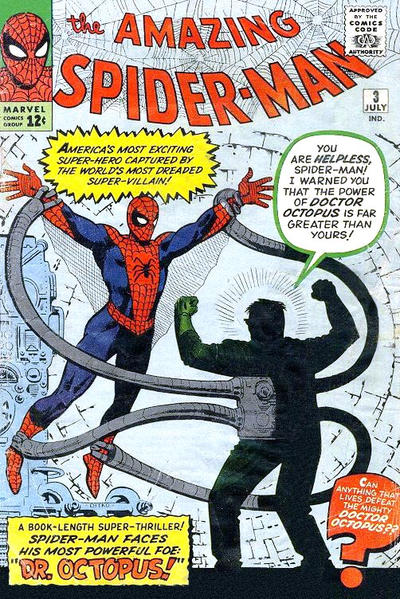
A super-villain could no longer merely have a gang of henchmen or choose a moniker like “The Sinister Six” when banding together, nor could an evil doctor work autonomously. Now they had to be part of a vast, global organization with tentacles infiltrating every major metropolitan area, such as the scourge of 007’s existence, S.P.E.C.T.R.E. or SPECTRE (Special Executive for Counter-intelligence, Terrorism, Revenge, and Extortion).
Of course, the good guys got wise and formed their own acronymnamed groups, like the T.H.U.N.D.E.R. (The Higher United Nations Defense Enforcement Reserves) Agents; the Agents of S.H.I.E.L.D. (originally Supreme Headquarters, International Espionage, Law-Enforcement Division); U.N.C.L.E. (United Network Command for Law and Enforcement); and Derek Flint’s Z.O.W.I.E. (Zonal Organization on World Intelligence Espionage).
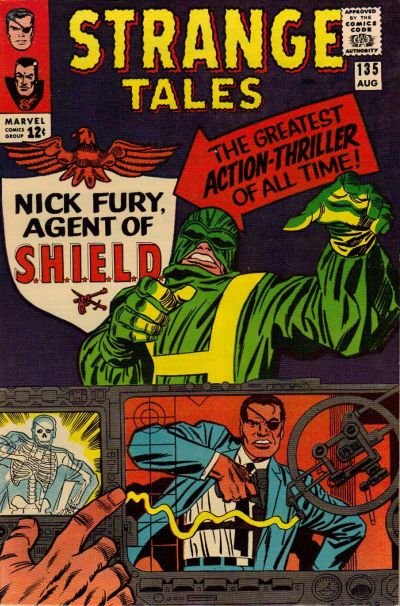
And in comic books, you didn’t even have to be a secret-agent series to use an acronym, like Gold Key’s gutsy battle book M.A.R.S. (Marine Attack Rescue Service) Patrol; or O.G.R.E. (Organization for General Revenge and Enslavement), which tangled with the Sea King in the pages of Aquaman.
DC even used acronyms in house ads, such as the one in late 1966 promoting 80-Page Giant Superman #193, touted as “The Mag from S.U.P.E.R.” (containing “Sensational, Unusual, Puzzling, Exciting, and Rip-roaring” adventures).
—
NEXT WEEK: An INSIDE LOOK at THE BEATLES’ Comic Book Debut. Click here.
You can order Hero-A-Go-Go! here.

April 22, 2017
Fascinating little history lesson, Dan! Pop culture is nothing if not a feedback loop!
April 23, 2017
Bond also did it to TV, from the Wild Wild West to Amos Burke, Secret Agent.